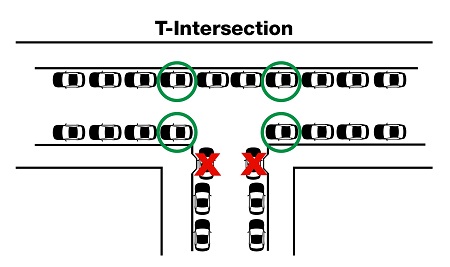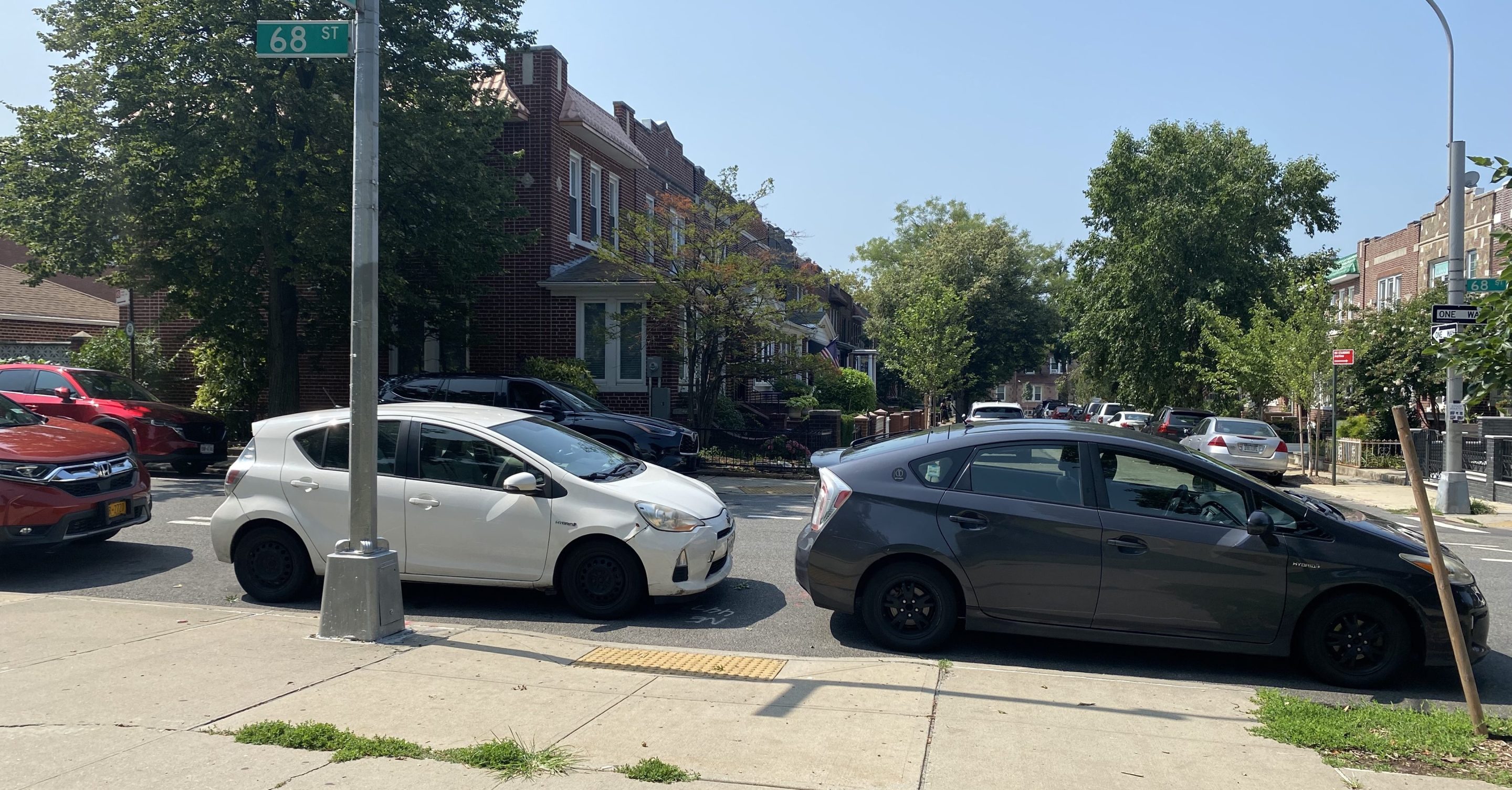They want to safely “cross the T" — everywhere.
A city proposal to ban parking at curbs cuts in "T" intersections must go further by banning all parking at the edges of such letter-shaped intersections, advocates demanded on Tuesday.
Officials do want to close a 2009 parking loophole that allows drivers to leave their cars in crosswalks at three-way junctions if they are unmarked, don't have traffic signals, or all-way stop signs — even if they do have a pedestrian ramp.
But at a rules hearing on Tuesday, accessibility activists called on the Department of Transportation to go beyond merely banning drivers from parking if there’s a pedestrian ramp and apply the change to all pedestrian crossings crossings at T intersections, even without ramps.
“We should not have to consider crossing an intersection a life-taking risk for our families. No driver should be allowed to make it less safe or accessible for the sake of a parking spot,” said Christine Serdjenian Yearwood, founder of the parental accessibility group UP-STAND, at the hearing.

DOT’s proposal would reverse a nearly decade-and-a-half-old waiver from state traffic laws, which came about after a push at the time by then-Council Member Vincent Gentile whose parking-obsessed Bay Ridge district has many such intersections.
The move has legalized more parking, but has been a bane for disability and street safety advocates, who slammed it as a handout that gives drivers some additional free storage space at the expense of visibility and access for New Yorkers to safely cross the street — especially if they’re pushing a stroller or they rely on a mobility device.
“We are happy that the rule will be altered to forbid some parking at T intersections, but we do not want any T intersection parking whatsoever,” said Jean Ryan, the president of Disabled In Action, who uses a wheelchair to get around.
Speakers at the virtual hearing used the opportunity to once again call on DOT to also clear the area around crosswalks of parked cars at all types of intersections to improve safety, also known as daylighting.
The city currently overrules a state law requiring intersections be free of parking within 20 feet of a crosswalk, thereby keeping more of that space for car storage, while other cities like Hoboken, successfully curbed traffic violence after daylighting all their intersections.
“We need to identify intersections and make New York City the like the rest of New York State to ban all parking from 20 feet from the crosswalk at every intersection,” said Rosamond Gianutsos, a Sunnyside resident and a vice chair of Queens Community Board 2. “That is the law and in the rest of the state it should be here.”
Queens Community Board 1 petitioned DOT in June to implement daylighting at every intersection, after a driver earlier this year killed 7-year-old Dolma Naadhun at an Astoria intersection that had been so frequently blocked by cars that the crosswalk wasn't fully painted.

More than 160 people signed onto a letter-writing campaign to DOT in support of the rule, and of going beyond that, said Jackson Chabot, director of advocacy at Open Plans (which shares a parent company with Streetsblog).
“We see that this is a great rule change, we see that this is overdue, and yet we really want no one to be able to park at any T intersection and on top of that … we want daylighting at every intersection,” Chabot said at the hearing.
Transportation leaders have resisted daylighting all city intersections, with Commissioner Ydanis Rodriguez saying that doing so without also installing physical infrastructure would clear the way for drivers to make faster and more dangerous turns.
DOT spokeswoman Mona Bruno re-shared an old statement in support of the rule change, but declined to give a timeline for its implementation, saying the agency will review feedback.






